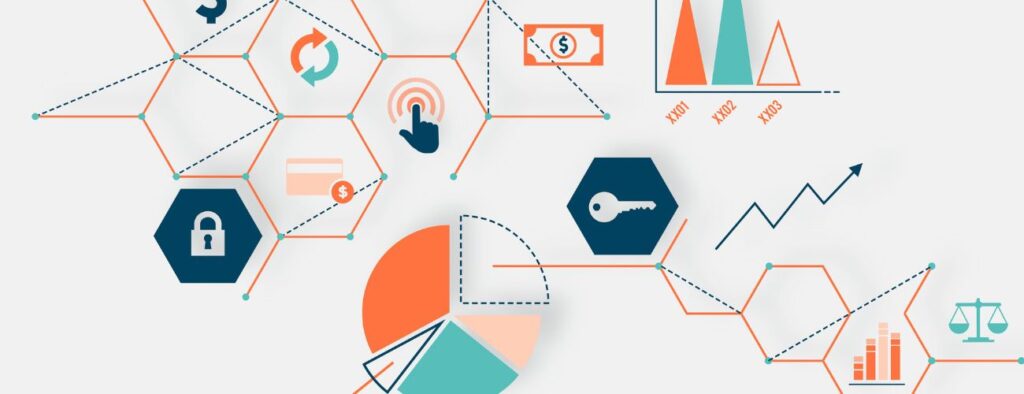Embracing open financial data in economies around the world would contribute to a GDP increase of 1-5% by 2030. The benefits flow to consumers as well as financial institutions through financial data sharing as it reduces various risks involved thus saving millions of dollars per year when seen at a large scale across banking communities. Creating economic value through data standardization fuels innovation for financial institutions.
Digital banking is the next normal after Covid, countries around the world have a turnaround execution to optimize their financial services to accelerate growth, increase economic efficiency, and boost productivity. However, robust digital finance infrastructure has proven its way to serving customers and accelerating banking services. Now, the next forward-looking aspect is creating an open-data financial ecosystem.
Financial data sharing has already been in place in safe and easy ways as technological, competitive, and regulatory forces are driving the markets. The initiatives include Open Banking Implementation Entity by the United Kingdom, the Second payment services directive by the European Union, Open Banking Nigeria, and much more. With a secure approach, many countries have switched to digital financial ecosystems and data-sharing platforms to overcome the limitations and fill the gaps that occurred by the Covid breakout.

Open data reflects on sharing financial data through a digital infra that requires less manipulation or limited effort. Estimated Credit and pricing risks, inefficient workforce allocations, gaps in product delivery and customer service, and rising frauds could be eliminated and accurately structured with the help of the digital ecosystem.
According to McKinsey’s global research data, the adoption of open-data ecosystems can boost GDP up to 1-1.5% by 2030 in European nations, the UK, and the US whereas 4-5% in India.
Due to imbalances in many economies, data standardization and data sharing flexibility couldn’t be achieved as the concerns about user consent, cybersecurity, data protection, and privacy remain unanswered. It’s because of the slower rate of transformation in banking industries and consumers’ adoption of digital modes.
The open financial data with the involved digitization offers the following benefits:
Accessibility enabled for financial services:
Consumers sign up for various financial services and data sharing allows them to buy and use financial services. The problem with traditional documentary sources is that they might disqualify consumers from accessing loans. Open financial data helps consumers to assess the credit score of borrowers through rent, phone, and utility bill sources. Individuals can also have access to formal credits to understand their worthiness to claim loans.
It’s also proven through a study that consumers having access to credit information became long-term customers and such kind of scaling became a gain to the economy. It’s estimated that increased access to credit information could boost the economy’s credit-to-GDP ratio by 20 basis points in the US and the European nations whereas 130 basis points in India by 2030.
Improved user convenience:
Time is a crucial factor when it comes to the banking sector. Traditional processes consume a lot of time and effort to process a customer’s onboarding process. Thanks to data sharing ecosystems in the banking sector which saved time through interactions with the financial services provider. Open data enabled automation in the application filling process and allowed consumers to apply for loans without the need for a broker. Open data access and sharing not only simplified the process but also enabled many customer benefits, including cost reductions, time spent in queues, one-on-one appointment bookings, etc.
More product options:
Open financial data helps customers by providing a range of product options. These options can save money for customers and give them the flexibility to choose what they need. The range of options includes switching accounts from one banking sector to another, helping retail customers with the best yield, allowing MSMEs to create their own assets, and so on.
The above three benefits flow to consumers and when it comes to institutions, the open data sharing in the financial services life cycle offers:
Automation to increase efficiency:
Errors are so common in the financial services segment when manual data handoffs happen and reworking the same set of files by multiple people leads to inefficient outcomes. And most available data in financial institutions is found in documents or desperate digitized sources. As there is promising scope for adopting various automation technologies, there’s an equal opportunity for institutions to improve customer experience, maintain transparency interactions with providers, and associated efficiency boost.
India is a country where a digital identification system has been implemented in many industries. One of them is KYC (Know Your Customer).
Recent analytics state that due to online KYC, the banks were able to reduce costs from $5 per customer to only $0.70.
Fraud risk analysis:
The Association of Certified Examiners estimates fraud of more than $4.5 trillion cost annually. These include synthetic and traditional ID, payments, credit applications, and account transactions. The evolution of open data or access to real-time data helps financial institutions to develop advanced predictive models to flag suspicious activities.
Better workforce allocation:
With the help of open data access, companies can focus on assigning high-level activities based on one’s potential. The maximum focus shift on critical customers is observed and time spent on low-risk customers can be eliminated. Also, activities can be aligned depending on the priorities so that each one in their role what is to be done and expected from them to meet desired outcomes.
Reduced data sharing with multiple vendors:
This is the most common in financial institutions as they depend on third-party providers for loans and lead capturing. In this case, details such as identification and behavioral information are skipped.
To keep up the basic identification data and track behavioral information, APIs act as intermediates thus enabling the institutions to access any form of data and use it whenever needed.
Evolving economies can adopt structural features and establish value creation through open financial data; which tend to have lower financial services access. The economy that has more breadth of open financial data, gives higher economic growth potential thus improving credit access. MSMEs also have benefits resulting in higher GDP as time is saved while opening and closing accounts.
The Finance services lifecycle delivers the full potential value of open data when data standardization and breadth of data access multiply.
Standardization reflects the existence of standardized mechanisms for sharing data and it can be only possible through ad-hoc means. On the other hand, breadth defines how data is navigated at various levels. Financial institutions can scale themselves when data sharing is allowed at every possible space. According to our analysis, we have understood that the companies could share data at moderate levels with standardized APIs to claim end-to-end benefits of open data.
To design or develop a data-sharing ecosystem, multiple factors are involved. Some of these include:
- Local market conditions
- Robust nature of existing digital infrastructure
- Regulation in which consumer protection laws and mechanisms are included
Implementation challenges and risks:
Capturing the value from open data goes beyond the data standardization and breadth of data sharing. It involves trust factors from consumers and companies along with infrastructure. These two aspects result in economic gains thus unleashing possibilities for innovation.
Trust:
All the people who are ready to use open financial data must trust the open data ecosystem to make it fully functional. Financial, data, indeed has sensitive nature, and users share the data only when they find value in it. Increasing levels of trust require a strong security wall otherwise the circumstances might turn drastic and enable the companies and users to opt out. While creating an open system, it’s critical to mitigate threats and breaches, especially while data transferring through cybersecurity.
Data ecosystems become successful when privacy and security are ensured while enabling users to access their data, rights over accessing the data, and transparency about who has accessed it.
Infrastructure:
Digital payment channels, financial accounts, and digital identification systems covering a vast range of populations are crucial features to foster the value of open data. User control over data, privacy protection, security for online transactions, and online account management demand highly qualified digital IDs. These digital IDs empower consumers to access data securely and in absence of digital IDs, it’s a matter of trust that affects them. Hence, building a robust infrastructure is a significant factor to unleash the full potential of open data.
Scope for innovation in open data:
Accessing open data demands innovation that increases data standardization and breadth. The estimated use cases go beyond as the potential for innovation grows. All types of innovators – traditional banking companies, financial institutions, evolving fintech startups, and digitally adopting players can build a great competitive advantage by focusing on areas of capabilities. However, innovators keep on varying based on the financial ecosystem type.
Fueling innovation and building greater market value for banks and consumers is what a powerful, secure, robust, and flexible data ecosystem can do.


